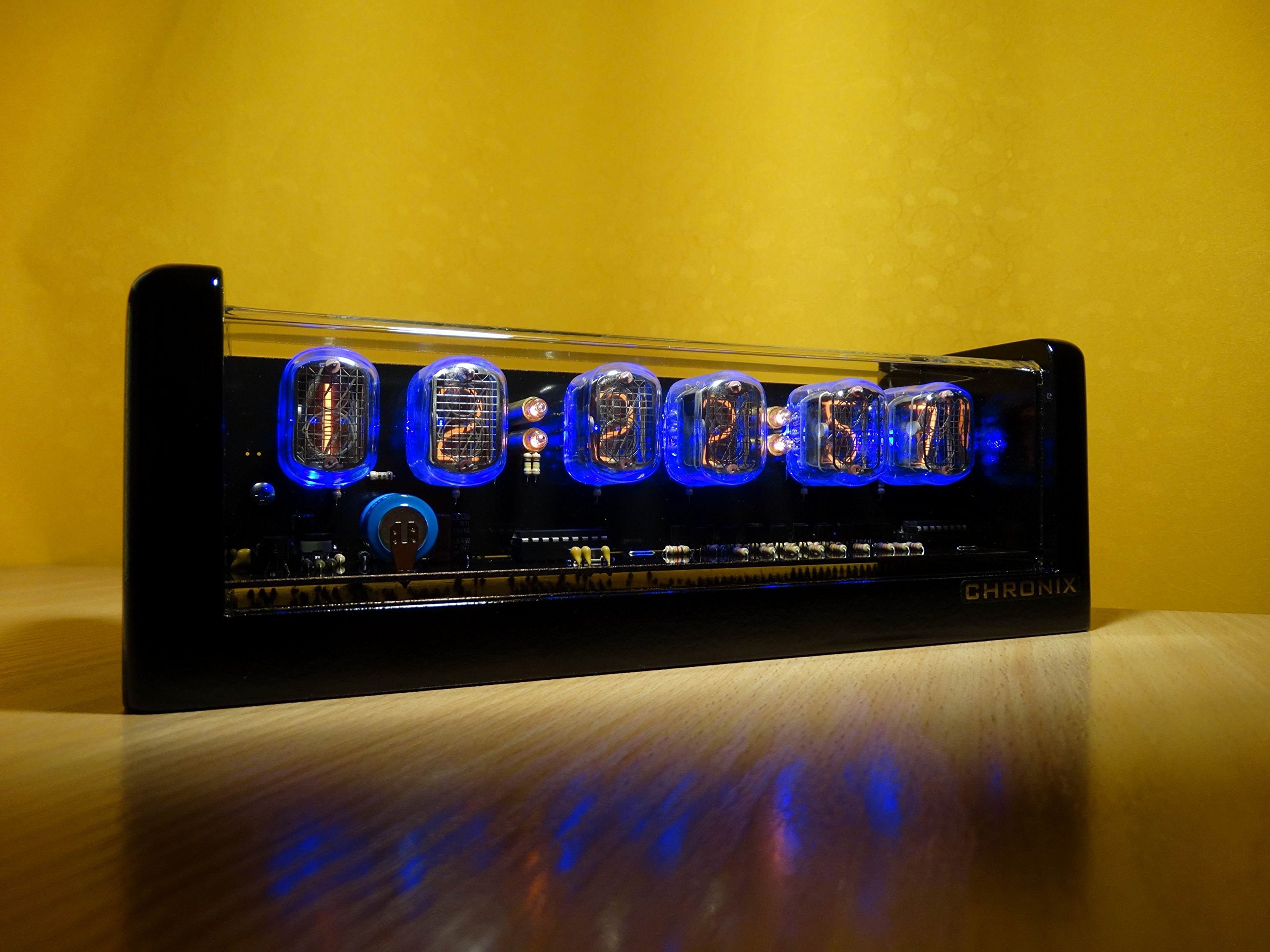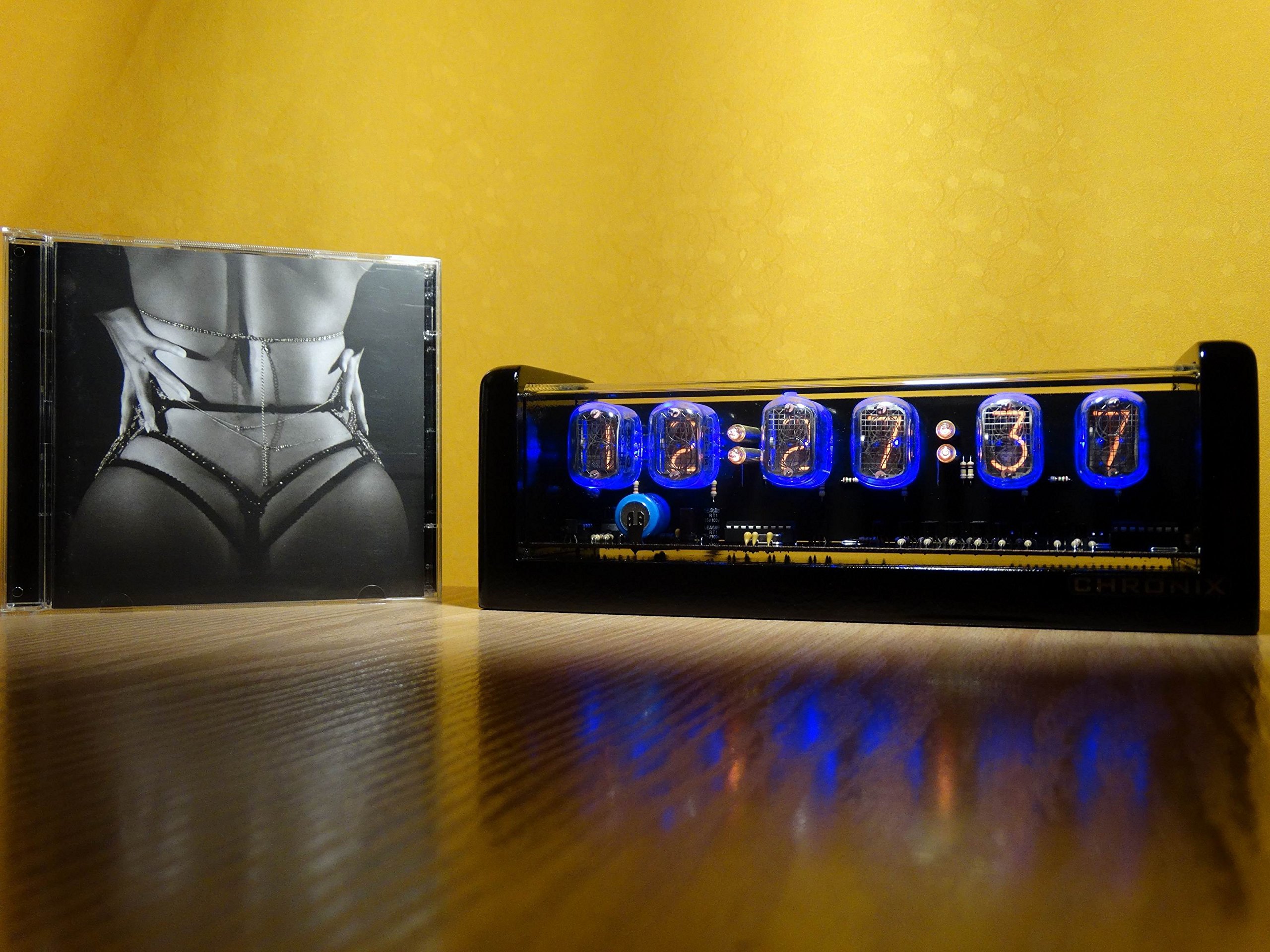Customer Services
Copyright © 2025 Desertcart Holdings Limited
Desert Online General Trading LLC
Dubai, United Arab Emirates









🕰️ Time Travel in Style!
The CHRONIX Nixie Tube Clock features six vintage IN-12 nixie tubes, handcrafted in a sleek black glossy wooden case with a transparent acrylic enclosure. It offers customizable brightness settings and includes a high-quality power adapter, making it a perfect blend of retro charm and modern functionality.
S**P
Time passes from Tube to Tube!
Very nice clock, if you have a pension for clocks, this is worth adding to your collection. You can always use another time piece...Shipped quickly and arrived unscathed. Easy to set up and see across the room! Has a cool modern-retro look...
J**0
I absolutely love this clock
I absolutely love this clock. The Nixie tubes are beautiful. The majority of the clock setup is worth the money-- unless you may admire building your own. (I do want to build my own but I lack the self esteem lol)The only reason I didn't give Chronix's clock a 5 star rating is because (In my opinion) they sloppily screwed the case in to the bottom. Two screws were stripped! If anything goes wrong, I'm unable to fix it now!?!Overall, I do love this vintage clock! I only wish they didn't drive the screws in to the point of messing up the base!:/
R**Y
Two Stars
Pretty small given the price.. does work.. was expecting more
D**E
Its still working great. No Tubes went defective like other models
Very durable and programs and works fine. look nice
S**G
Gorgeous!
Beautiful clock! Directions were a little hard to figure out, but once I did, aww man! Pics don’t do it justice, beautiful workmanship!
D**S
Awesome Oscillator, But Not Without Problems - Sticky Pins, Cheap Caps, Hoping Buttons Aren't Cheap
I love the timepiece, but it has 2 issues - 1. Capacitor brand; 2. Anticorrosive agent on electrodes.The capacitors used are TK and Chong brand, and of inferior quality to what would normally be found in a product at this price point. They are probably just filter or decoupling capacitors, but I just don't see any reason to use low cost capacitors in a low quantity production device at this price point, when it saves 25 cents per unit and could lead to potential failure down the road in what is not at all an inexpensive circuit - and one that people probably intend to keep for decades. Seeing the bottom dollar capacitors does not fill me with confidence that the buttons will last. In addition to these capacitors the tube pins were coated with a dried sticky abrasive goo reminiscent of "Noalox" - it's likely a corrosion inhibiting compound designed to keep pins from corroding or loosening out of their sockets in high vibration environments, such as aeronautical displays or mobile transceivers, where relative humidity is constantly changing. Upon opening the enclosure to rotate the tube groups to prevent cathode poisoning, something I generally do every 6 months or so in such a device, I found this abrasive paste was left on the display elements when they were inserted into their pins. In order to remove the tubes, I had to apply what I would consider an unreasonable amount of force to each one to liberate it from it's makeshift socket. If the pins aren't all withdrawn at the same rate, an act made harder by the abrasive pinched between the pins and the receptacles, it creates lateral stress on those hollow pins, which is transferred to the PCB through the solder joint. I mean to say that the tubes aren't in tube sockets, they are inserted into pins soldered onto the backplane PCB. Abrasive goop would be good if it was in a strong ceramic socket with lateral rigidity that was vibrating, but with pins, it just increases the stress on those pins, metal to glass seals on the tubes, and the PCB during retubing. This agent proved to be readily soluble in water, was washed off, and high weight silicone dielectric grease was dabbed onto the them. The silicone grease allowed the pins to slide in easily with about 10 times less force (now that the vintage abrasive compound was gone) without creating angular stresses on the pins, the traces, or the PCB. The silicone compound will eliminate those stresses going forward whenever the tubes are rotated or replaced. It seems that such a grease would be the best way to go, but they may have had concerns about tubes coming loose during shipping, and so left this compound on deliberately. Be extremely careful retubing, probably best to wash that compound off the tube pins with some water, and apply some silicone dielectric grease when you do. As for the life of the cheap caps or the soft touch buttons, only time will tell.
J**E
It's the real deal
This is awesome looking clock. The build quality is top-notch, everything works as expected. Arrived way sooner than what Amazon said.
G**R
well worth the money if you love clocks
I ordered this thinking l was going to be disappointed because it was pretty expensive but just the opposite it will look good with my clock collection
Trustpilot
2 days ago
1 month ago